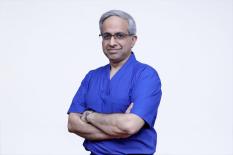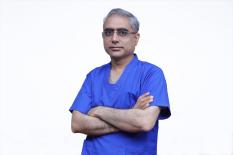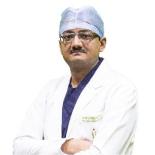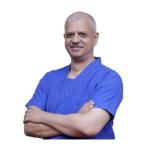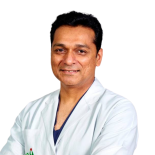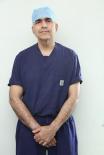About Orthopaedics
Orthopaedics is a branch of medical science mainly focusing on diagnosing, treating, and preventing disorders and injuries of the musculoskeletal system, including the joints, muscles, bones, ligaments, and tendons. Orthopaedic surgeons or orthopaedists help treat disorders, illnesses, or conditions related to the musculoskeletal system.
What is the orthopaedic department?
The orthopaedic department is specialised in diagnosing, treating, and preventing issues related to the musculoskeletal system. Musculoskeletal issues may include injuries, diseases, and disorders of bones, joints, muscles, tendons, and ligaments. An orthopaedic department is staffed with orthopaedicists or orthopaedic surgeons and other health care professionals. This department mainly deals with performing operations of joints, ligaments, and bones. The most common services offered by this department include physical therapy, surgery, diagnostic procedures, rehabilitation, and pain management procedures. The orthopaedic department comprises the following healthcare professionals:
- Orthopaedic surgeons: They are physicians specialised in treating musculoskeletal disorders via surgical and non-surgical methods.
- Physiatrists: These physicians are specialised in treating musculoskeletal issues via non-surgical methods like physical therapy and rehabilitation.
- Orthopaedic nurses: They are registered nurses trained in orthopaedics to provide primary care and treatment to cases with musculoskeletal issues.
- Orthopaedic physician assistants: They are trained healthcare professionals who assist orthopaedic surgeons and physiatrists along with nurses during diagnostic and treatment procedures.
Orthopaedists
Orthopaedists are also known as orthopaedic surgeons. They help people by providing professional care and treatment for the disorders of the musculoskeletal system. Orthopaedists are similar to rheumatologists in that both are specialised in treating diseases of the musculoskeletal system. The only difference is that orthopaedists perform surgery while rheumatologists don’t. They often care for people together. Some orthopaedists are generalists and treat a wide range of disorders, while some choose to subspecialise. The subspecialties include:
- Joint replacement
- Foot and ankle surgery
- Hand and upper extremity surgery
- Orthopaedic oncology
- Orthopaedic trauma
- Spine surgery
- Sports medicine
- Paediatric orthopaedic surgery
Which diseases are treated by orthopaedists?
The common conditions treated by orthopaedists or orthopaedic surgeons include:
Osteoarthritis: It is a common condition of the musculoskeletal system, also known as arthritis. It is a degenerative joint disorder. It is caused by the worn down of cartilage that lines the joints. The joints in your body are capped with a tough layer called cartilage. It plays a role as a shock absorber and a lubricant and helps the bones to move against each other smoothly and safely. In this condition, the cartilage wears off over time. It usually occurs in the hands, knees, hips, neck, and lower back. Osteoarthritis can be classified as:
- Primary osteoarthritis: It is a condition caused by normal wear and tear of joints that develops over time as you age.
- Secondary osteoarthritis: It is a condition caused by direct damage to the joints and injuries and traumas.
Symptoms include joint pain, stiffness of fingers, unable to bend or move, joint swelling, and weak joints.
Bursitis: In this condition, a small fluid-filled sac called bursa swells up. Bursae is a space around the bones and tissues. They are responsible for protecting bone structures. It protects the space between the bones and muscles, bones and tendons, and bones and skin. It is caused due to overuse and pressure on the bursa. There are many types of bursitis, such as:
- Subacromial bursitis: Affecting the shoulders
- Olecranon bursitis: Affecting the elbows
- Prepatellar bursitis: Affecting the knees
- Trochanteric bursitis: Affecting the hips
- Ischial bursitis: Affecting the butt
The symptoms include pain in the affected part of your body, swelling, fever, chills, discolouration, and redness of the skin.
Bone cancer: This cancer develops in the bones due to the growth of cancerous cells that harm the normal bone tissue. The cancer that develops in the bones is called primary bone cancer. The cancer that forms in the other organs or other parts of the body and spreads to bones is called secondary bone cancer. Bone cancer is rare and can develop at any age. There are mainly four types of bone cancers:
- Osteosarcoma: It is a common type of bone cancer that develops in cells that form new bone tissues. It begins at the end of large bones in the arms and legs.
- Ewing sarcoma: This tumour forms in the same type of cells in bones. It forms in bones and surrounding soft tissues. It is most seen in the hips, ribs, and shoulders.
- Chondrosarcoma: It occurs in the cartilage, which is a soft connective tissue that allows bone movements. It is commonly seen in arms, legs, or pelvic bones.
- Chordoma: It is a tumour that begins in the spine. It affects men more than women.
Bone cancer mainly has four stages:
- Stage 1: In this stage, the tumour is low-grade, and cancer cells are not localised.
- Stage 2: In this stage, the tumour is high-grade, and the cancer cells are localised.
- Stage 3: In this stage, the tumour is high-grade, and cancer cells spread to other areas within the same bone.
- Stage 4: In this stage, the cancer cells spread to the other parts of body.
Symptoms include a painless lump formed on the skin, difficulty in moving, fever, and fatigue.
Bone fractures: Bone fractures are referred to as broken bones, which are caused by falls, accidents, or injuries. Bone fractures damage the bones and need to be treated as soon as possible by surgery or non-surgical methods. Based on the pattern and part of the affected bone, bone fractures are classified into:
- Oblique fractures
- Transverse fractures
- Longitudinal fractures
- Greenstick fractures
- Comminated fractures
- Segmental fractures
- Spiral fractures
- Stress fracture
- Buckle fractures
- Avulsion fracture
Sprains: Sprains are the injuries of ligaments, which are the bands of tissue connecting the bones. They act like a rope that holds muscles and bones together. They control the movement of bones. There are five types of sprains:
- Ankle sprains
- Wrist sprains
- Knee sprains
- Finger sprains
- Thumb sprains
Symptoms include pain, swelling, discolouration, and instability in the affected area.
Tendinitis: It is the inflammation of tendons, which is a connective tissue between the muscles and the bones. It is caused by repetitive strains or injuries. It is most commonly seen in the shoulders, elbows, and knees. It can be acute or chronic. Based on the area of the body, tendonitis can be classified as:
- Pitcher’s shoulder
- Tennis elbow
- Golfer’s elbow
- Runner’s knee
- Swimmer’s shoulder
Symptoms include pain in the affected site of tendons, stiff joints, cracking sensation, and swelling of the site.
Paget disease: It is a chronic bone disorder characterised by excessive breakdown and resorption of bone. It is most seen in the pelvis, spine, and legs. It can be monostotic or polyostotic. Symptoms include bone or joint pain, bone fractures, headache, and hearing loss.
Diagnosis and treatment methods used by orthopaedic doctors
Diagnostic procedures
Electromyography (EMG): It is a diagnostic technique used for diagnosing orthopaedic injuries. It is mainly performed to assess the condition of the muscles and nerve cells. It is carried out using electrodes to translate the issues as graphs, sounds, or numerical values. It is carried out by inserting a needle into the muscles to get to know its condition.
Bone density test: It is a diagnostic technique commonly used in the case of osteoporosis. It is conducted to know the calcium levels in the bones that are packed into different sections.
Magnetic resonance imaging (MRI): It is a test conducted with the help of magnetic fields and radio waves to create digital images of internal organs.
X-rays: It is a diagnostic technique that uses X-rays to take a digital image of the bones to identify the disease. They use electromagnetic energy beams to take images of the bones and surrounding soft tissue. It is more often used in cases of bone fractures.
Myelography: It is a technique that uses X-rays to examine the spinal canal to detect an injury or other conditions.
Treatments
Treatments for an orthopaedic disease or condition are of two types:
- Non-surgical method
- Surgical method
Non-surgical methods
Medications: These include cortisone, steroids, antibiotics for infections, pain reliefs, and non-opioid medications like acetaminophen or ibuprofen. Anti-inflammatory drugs, analgesics, and muscle relaxants are also given.
Physical therapy: It is a treatment given to loosen stiff muscles and improve muscle strength. It comprises exercises and techniques to increase the flexibility, strength, and range of motion. It involves the usage of manual therapy, therapeutic exercises, and electrical stimulations to help patients recover from injuries.
Orthotics and bracing: These are the shoes, knee braces, and ankle braces given to support the musculoskeletal system. They are given to treat alignment issues, reduce pain, and prevent further injuries.
Traction and manipulation: It is a technique wherein a gentle pulling force is applied to the affected area to relieve pressure on the spine or joints and promote the realignment of bones. It involves controlled force on joints to improve mobility, reduce pain, and restore function.
Surgical methods
Orthopaedic surgery mainly aims to reduce pain and restore the mobility of the patient. There are many types of orthopaedic surgeries, such as:
Joint replacement surgery: This is a procedure wherein the damaged joint is removed and replaced with artificial implants like prostheses, which are made up of metal, plastic, and ceramic.
Spinal surgery: It is carried out to treat herniated discs, spinal stenosis, or spinal fractures.
Ligament and tendon repair surgery: It involves repairing of the affected ligaments and tendons.
Fusion surgery: It is performed to join two or more bones to stabilise the area affected by bone degeneration.
Discectomy: It is a surgery performed to reduce strain on the spine. It is used in case of disc herniation.
Benefits of orthopaedic consult
- Accurate diagnosis can be done to treat a wide range of conditions in the early stages.
- It helps in developing a personalised treatment plan.
- It helps identify potential risk factors that prevent future injuries and provides strategies to prevent them.
- It helps restore function and mobility of bones and joints and helps reduce pain and injuries.
- It prevents the risk of long-term complications.
- It helps in fast recovery and improved outcomes.
How team Fortis helps you after an orthopaedic procedure?
Fortis is a healthcare provider in India that provides a wide range of health services to ensure the recovery and safety of patients. They help you by providing:
- We provide coordinated care from admission till the discharge of the patients.
- We work closely with orthopaedic surgeons and help in pain management, physical therapy, and surgeries.
- We provide individualised exercises and rehabilitation programs to help you regain strength, mobility, and range of motion after the surgery.
- We provide wound care services to ensure proper healing of injuries.
- We help in medication management and ensure that you are taking right dosage of medications at the right time.
- We also give emotional support by counselling you to help you cope with physical and emotional challenges associated with the surgery.
Conclusion
To conclude, the modern healthcare system is not the same without orthopaedic departments as they offer treatments for a wide range of musculoskeletal issues. It is very important to consult orthopaedists if you are dealing with any musculoskeletal issues, like injuries or any chronic conditions, to figure out the best course of action to treat your problems.
Our Team of Experts
View allMedical Procedures for Orthopaedics
View allBreakthrough Cases
View allOur patient’s stories
View allRelated Specialities
Other Specialities
-
Explore Hospitals for Orthopaedics
Fortis CDOC, Chirag Enclave, New Delhi Fortis Escorts Heart Institute, New Delhi Fortis Escorts Hospital, Amritsar Fortis Escorts Hospital, Faridabad Fortis Escorts Hospital, Jaipur Fortis Flt. Lt. Rajan Dhall Hospital, Vasant Kunj Fortis Hospital - Greater Noida Fortis Hospital & Kidney Institute, Gariahat, Kolkata Fortis Hospital BG Road Bangalore Fortis Hospital CG Road Bangalore Fortis Hospital, Richmond Road, Bengaluru Fortis Nagarbhavi Bangalore Fortis Hospital, Anandpur, Kolkata Fortis Hospital, Kalyan, Mumbai Fortis Hospital, Ludhiana Fortis Hospital, Mohali Fortis Hospital, Mulund, Mumbai Fortis Hospital, Noida Fortis Hospital, Rajajinagar, Bengaluru Fortis Hospital, Shalimar Bagh, New Delhi Fortis Memorial Research Institute, Gurgaon Hiranandani Fortis Hospital, Vashi, Mumbai S L Raheja Hospital, Mumbai Fortis Hospital Mall Road, Ludhiana Fortis La Femme, Greater Kailash II, New Delhi -
Explore Doctors for Orthopaedics by Hospital
Doctors in Fortis CDOC, Chirag Enclave, New Delhi Doctors in Fortis Escorts Heart Institute, New Delhi Doctors in Fortis Escorts Hospital, Amritsar Doctors in Fortis Escorts Hospital, Faridabad Doctors in Fortis Escorts Hospital, Jaipur Doctors in Fortis Flt. Lt. Rajan Dhall Hospital, Vasant Kunj Doctors in Fortis Hospital - Greater Noida Doctors in Fortis Hospital & Kidney Institute, Gariahat, Kolkata Doctors in Fortis Hospital BG Road Bangalore Doctors in Fortis Hospital CG Road Bangalore Doctors in Fortis Hospital, Richmond Road, Bengaluru Doctors in Fortis Nagarbhavi Bangalore Doctors in Fortis Hospital, Anandpur, Kolkata Doctors in Fortis Hospital, Kalyan, Mumbai Doctors in Fortis Hospital, Ludhiana Doctors in Fortis Hospital, Mohali Doctors in Fortis Hospital, Mulund, Mumbai Doctors in Fortis Hospital, Noida Doctors in Fortis Hospital, Rajajinagar, Bengaluru Doctors in Fortis Hospital, Shalimar Bagh, New Delhi Doctors in Fortis Memorial Research Institute, Gurgaon Doctors in Hiranandani Fortis Hospital, Vashi, Mumbai Doctors in S L Raheja Hospital, Mumbai Doctors in Fortis Hospital Mall Road, Ludhiana Doctors in Fortis La Femme, Greater Kailash II, New Delhi


